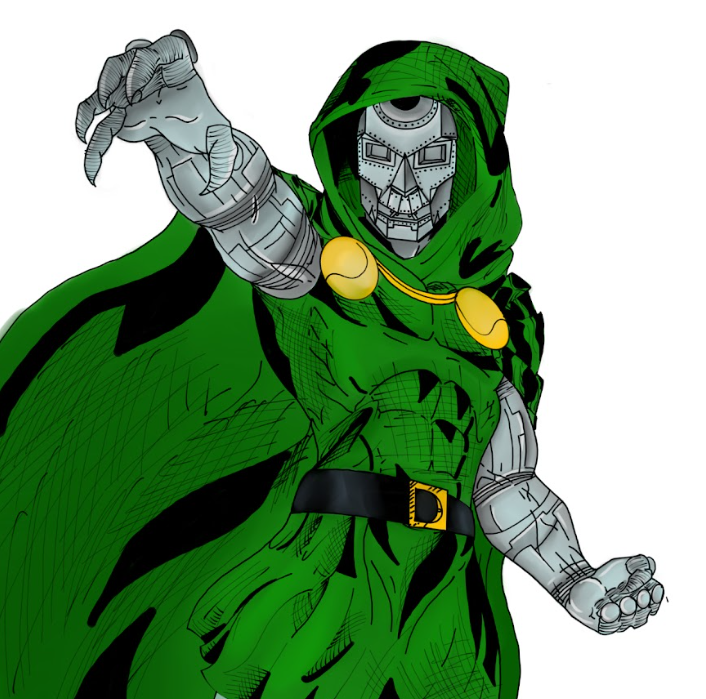Frank Sinatra once sang, “Fly me to the moon,” but now anyone on Earth can ask “Which moon do you want to go to, Frank?” Since there is a new moon in orbit this Fall accompanying the Moon. According to NPR, the new moon is actually an asteroid spanning 33 feet long and was first spotted in South Africa. The “mini-moon” is now named 2024 PT5 and will only be in Earth’s orbit for a short period of time. Good things can not last forever, so it will be nice to admire 2024 PT5 while Earth has it. But of course, this is not the best moon to come around. Here are the top five best moons in the solar system.
Luna
Coming in first for the best moon is the Earth’s very own Moon. It was the only known moon until Galileo Galilei discovered four moons orbiting Jupiter in 1610. The Moon is arguably the best marketable icon known to man. Everyone is obsessed with the Moon and often uses it as their muse in media like movies, TV shows, and food. One movie in particular comes to mind when talking about the Moon: “A Trip to the Moon,” directed by Georges Miles in 1902. This movie changes the course of film history as well as how humans view outer space. Another thing that comes to mind is the traditional dessert “MoonCakes.” They are often enjoyed during the mid-autumn festival in Chinese culture. No other moon can really gather humanity together like the Moon.
Titan
Moving on to the second-best moon out there, and the second largest in the solar system: Titan, a moon from Saturn. Titan is a bit of a celebrity like the Moon since it was featured in the 2009 film “Star Trek.” But this is not the only appearance it made in the media, being featured in TV shows like “Futurama,” “Cowboy Bebop” and so many more. Titan is the most hospitable moon in the solar system with liquids in the form of rivers, lakes and oceans on it. With its dense atmosphere, humans would not need a pressure suit to walk on its surface. Titan could become human’s planet B, but, of course, it would be ideal to stay on Earth for as long as possible.
Ganymede
The third best moon in the solar system hands down has to be Jupiter’s moon Ganymede, which is the largest moon out of the 293 moons in the solar system. This is one of the coldest moons having temperatures as low as -297 to -171 degrees Fahrenheit. Ganymede was one of the moons discovered by Galileo, and since then scientists have confirmed there is a deep saltwater ocean accompanied on the icy planet. With that being said, this impressive moon has the possibility to support life. The origin of the name Ganymede comes from Greek philosophy referring to a young beautiful boy who was carried to Olympus by Zeus. Ganymede being associated with one of the most iconic Greek Gods makes this moon cool by association.
Charon
Now the fourth best moon would be the largest out of Pluto’s moons, Charon. Charon is so big, it dominates Pluto in size and sometimes makes it wobble. The depth of the moon is 754 miles across compared to its parent planet Pluto, which is 1,400 miles across. This moon is so big it is often referred to as a double dwarf planet alongside Pluto. Charon was discovered by accident in 1978 by U.S. Naval Observatory Flagstaff James Christy. Christy named the moon Charon in reference to the mythological ferryman who carried souls across the river in Archeron and in connection to his wife’s name, Charlene, since the first four letters match. What a romantic origin story about the big ol’ moon Charon.
Ariel
Landing on the fifth best moon would be one of the most literary moons around Uranus, Ariel. The name Ariel refers to one of the characters in Shakespeare’s play ‘The Tempest’. Discovered on Oct. 24, 1851, by amateur astronomer William Lassell, Ariel has one of the brightest surfaces with very few craters compared to the other moons orbiting Uranus. With such a young appearance, Ariel could be referred to as one of the most mysterious moons in the solar system.
Although all of these moons are distinguished and unforgettable due to their time spent in the solar system so far, Earth’s mini-moon will forever be remembered as a historic event that humankind will cherish forever, or until it leaves on Nov. 25. Keep an eye out for the asteroid in the night sky before it completes its full orbit.











